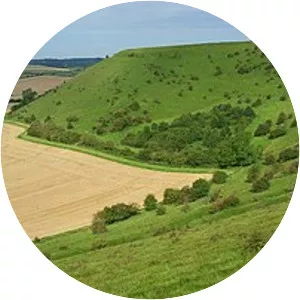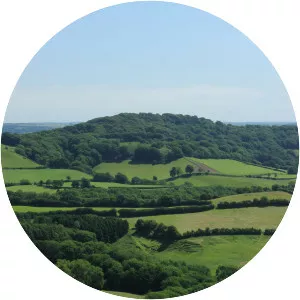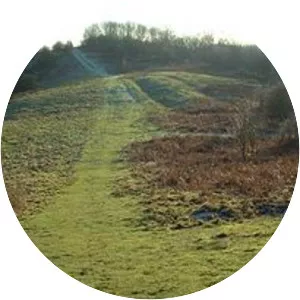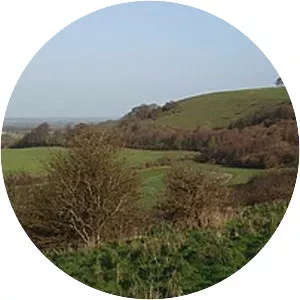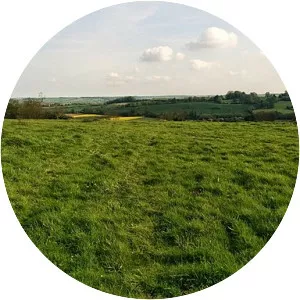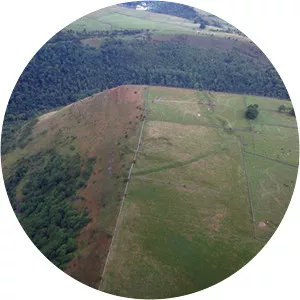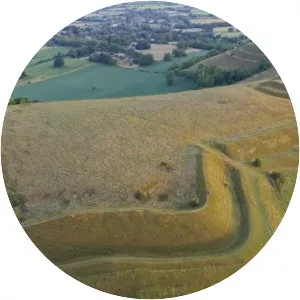
Hambledon Hill
| Use attributes for filter ! | |
| Elevation | 192 |
|---|---|
| Topo map | OS |
| Range | Cranborne Chase |
| Easiest route | Hiking |
| Age of rock | Cretaceous |
| Management | National Trust for Places of Historic Interest or Natural Beauty |
| Date of Reg. | |
| Date of Upd. | |
| ID | 1272343 |
About Hambledon Hill
Hambledon Hill is a prehistoric hill fort in Dorset, England, situated in the Blackmore Vale five miles northwest of Blandford Forum. The hill itself is a chalk outcrop, on the southwestern corner of Cranborne Chase, separated from the Dorset Downs by the River Stour. It is owned by the National Trust.
Earliest evidence of milk consumption found
The Evidence comes from dental plaque from Neolithic remains
Scientists have discovered the earliest direct evidence of milk consumption by humans.
The Team identified milk protein entombed in calcified dental plaque (calculus) on The Teeth of prehistoric farmers from Britain.
It shows that humans were consuming Dairy Products as early as 6,000 years ago - despite being lactose intolerant.
This could suggest they processed the raw milk into cheese, yoghurt or some other fermented product.
This would have reduced its lactose content, Making It more palatable.
The Team members scraped samples of plaque off The Teeth , separated the different components within it and analysed them using Mass Spectrometry .
They detected a milk protein called beta-lactoglobulin (BLG) in the tartar of seven individuals spanning early to middle Neolithic times.
"Proteomic analysis of calculus is a fairly recent technique. There have been a few studies before, but they have generally been on historical archaeological material rather than prehistoric material," co-author Dr Sophy Charlton, from The Department of archaeology at the University of York, told Bbc News .
Dr Charlton, shown here sampling the plaque from ancient teeth, says raw milk might have been processed into cheese or some other dairy productLactose intolerance arises from the inability to digest the lactose sugar contained in milk beyond infancy. This means that consuming milk-based foods can cause uncomfortable symptoms such as abdominal pain, diarrhoea and nausea. However, many modern Europeans possess a genetic mutation which allows for the continued consumption of milk into adulthood.
This mutation affects a section of DNA controlling the activity of the gene for lactase - an enzyme that breaks down lactose sugar. However, previous studies of the genetics of Neolithic Europeans show that they lacked this mutation.
Dr Charlton said it was possible these Stone Age people were limiting themselves to small amounts of milk. "If you are lactose intolerant and you consume very, very small amounts of milk, then it doesn't make you too ill. You can just about cope with that," she explained.
But Dr Charlton added: "The Alternative option, which I think is perhaps slightly more plausible, is that they were processing The Milk in such a way that it's removing a degree of the lactose. So if you process it into a cheese, or a fermented milk product, or a yoghurt, then it does decrease the lactose content so you could more easily digest it.
"That idea fits quite well with other archaeological evidence for the period in which we find dairy fats inside lots of Neolithic pottery, both in the UK and the rest of Europe . "
The Neolithic saw the introduction of domesticated animals, such as sheep, cows and goatsIn addition, some of The Milk residues found in these pots appear to have been heated, which would be required for processing raw milk into cheese or some other product.
The human remains tested in the study come from three Neolithic sites: Hambledon Hill in Dorset, Hazleton North in Gloucestershire, and Banbury Lane in Northamptonshire.
More Than one quarter of the pottery fragments at Hambledon Hill had milk lipids on them, suggesting that dairy foods were very important to the people living at that site. Other Neolithic sites show evidence of animal herds that are consistent with those used for dairying.
Genetic studies of ancient populations from across Eurasia show that lactase persistence only became common very recently, despite the consumption of milk products in the Neolithic. The mutation had started to appear by The Bronze Age, but even at This Time , it was only present in 5-10% of Europeans.
The Neolithic age in Britain lasted from about 6,000 to 4,400 years ago and saw the introduction of farming, including the use of domesticated animals such as cows, sheep, pigs and goats.
The study has been
Follow Paul
archaeology, genetics, agriculture
Source of news: bbc.com

